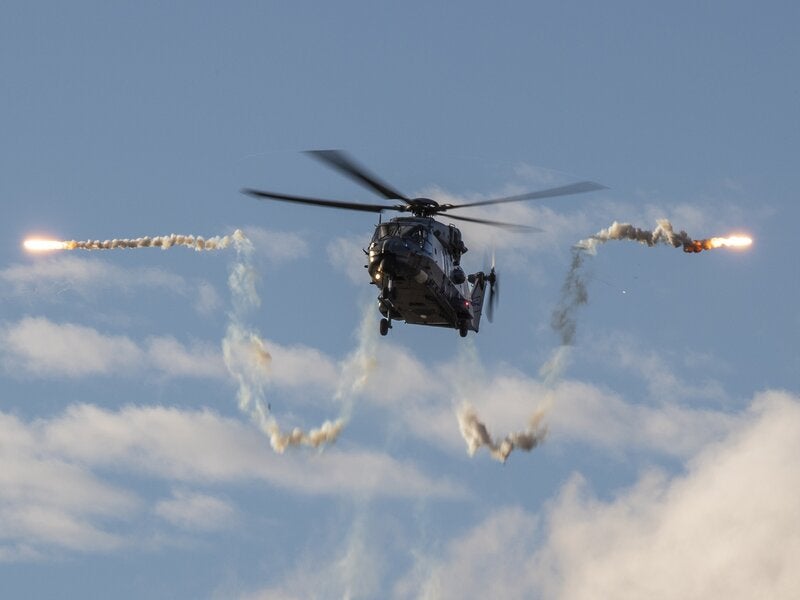
Rheinmetall announced a €50m contract on 15 January 2024, a €50m ($54.4m) contract for the provision of Birdie infrared decoys to be equipped on to aircraft in the German military from December 2023 until December 2029.
Birdie decoys, which are effective against Air-to-Air Missiles (AAM) and Surface-to-Air Missiles (SAM), essentially function as flares that are ejected from helicopters, transport planes and jets when the pilot perceives the threat of a heat seeking missile and engages the decoys.
To an infrared missile, heat the flare of the Birdies give off resembles the heat signature of an aircrafts exhaust gasses, giving rise to the potential for the missile to lose its target.
Infrared countermeasures and Mutual Air Denial
Germany’s purchase is reflective of decision making militaries around the world will be balancing after observing the last two years of conflict in Ukraine.
Arriving at a state of Mutual Air Denial, both Russian and Ukrainian air forces have led a diminished role in the war, with the range of mission types available to aircraft reduced mainly to close air support, due to the proliferation of anti-aircraft systems such as infra-red targeting anti-aircraft missiles.
Unable to traverse territory without the security of ground support, much of the long range air strikes in the conflict that began in February 2022 have been conducted by drone or cruise missile rather than highly sophisticated and expensive air platforms, for fear of attrition by cheap man-portable anti-aircraft weapons.
How well do you really know your competitors?
Access the most comprehensive Company Profiles on the market, powered by GlobalData. Save hours of research. Gain competitive edge.

Thank you!
Your download email will arrive shortly
Not ready to buy yet? Download a free sample
We are confident about the unique quality of our Company Profiles. However, we want you to make the most beneficial decision for your business, so we offer a free sample that you can download by submitting the below form
By GlobalDataIn an Atlantic Council public event in September 2022, Lt. Gen. S. Clinton Hinote, Deputy Chief of Staff for Strategy, Integration, and Requirements of the US Air Force, spelled out the circumstance that had led to a state of Mutual Air Denial.
“Typically, we have been thinking about using air power in ways that involve very exquisite platforms and capabilities that are very expensive,” said Hinote. “A missile, or sets of missiles, or even a dozen missiles coming out are much cheaper than that one particular platform.”
Alternative to flare decoys
The contract with Rheinmetall is for two different kinds of decoy, both already in service with the German Military: IR-Birdie 118 BS and IR-Birdie 218 BS, but air self-defence does not stop at the use of flares, and other techniques and capabilities are available to air forces looking to enhance the survivability of air platforms, include chaff for deceiving adversary radar, and smoke screens, such as Rheinmetall’s own fast acting ROSY smoke obscurant munition.
Many modern airframes are also fitted with infrared countermeasure pods that incorporate a missile warning systems with a high energy laser capable of targeting incoming missiles with a directed energy beam that interferes with the infrared sensor.
There are prime advantages to this system over the use of flares. The first being that it does not rely on the reflexes father pilot to deploy the flares in time to avoid a missile, or the situational awareness of the pilot to know to deploy the flares in advance of entering a hazardous anti-aircraft environment.
The second is that the number of flares that an airframe caries is finite, and this countermeasures can in turn be counteracted an assailant with knowledge of the number of flares operating with a loose enough time-constraint to count out their number as the flares are deployed.







